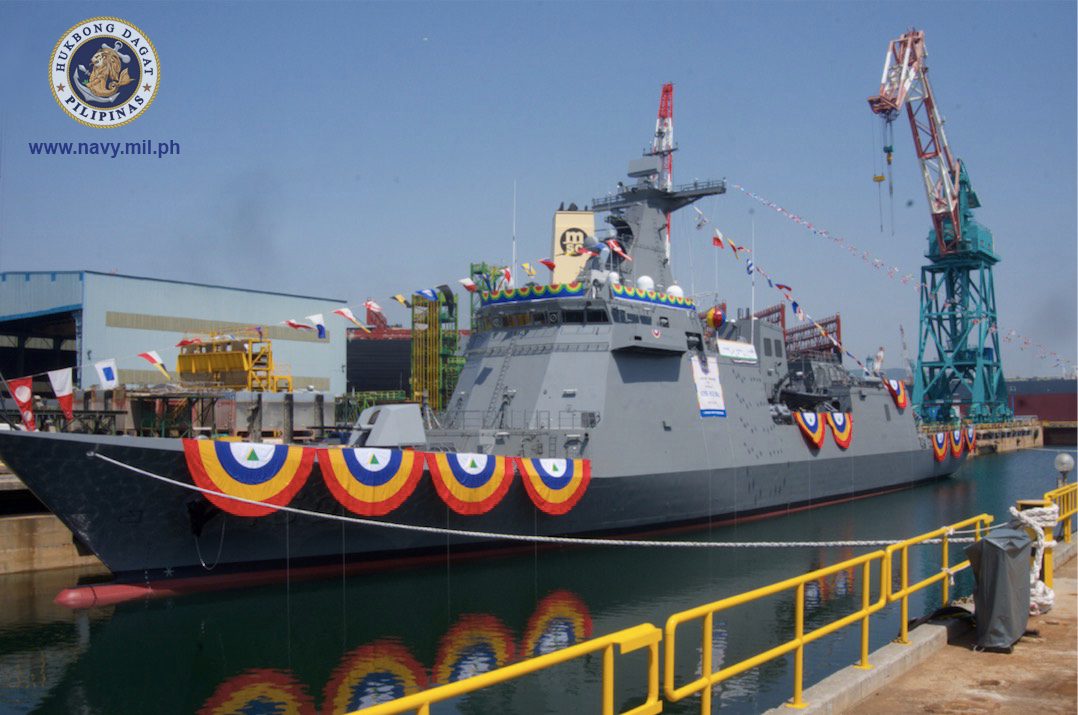SUMMARY
This is AI generated summarization, which may have errors. For context, always refer to the full article.

MANILA, Philippines – Without the military muscle to match the occasional foreign warship wandering unannounced through its territorial seas, the Philippines is looking for ways to compel trespassers to leave without provoking an armed response.
The Philippine Navy is working on protocols for dealing with intruders, to enforce an order from President Rodrigo Duterte to drive away unauthorized foreign vessels even through “unfriendly” means if necessary, Flag Officer-in-Command Vice Admiral Robert Empedrad told reporters on Wednesday, August 28.
A series of recent incursions by Chinese naval and survey vessels has caused alarm among security officials, and prompted Duterte to issue the directive.
The question is, how “unfriendly” can Philippine forces get toward stronger navies like China’s?
Defense Secretary Delfin Lorenzana earlier dodged the question, saying he would defer to the Navy’s recommendations.
“So regarding the ‘unfriendly’ gesture, the Navy is coming up with rules of engagement…. Not necessarily provocative kasi ‘pag nag-general quarters ka (because if you call general quarters), it means your ship is ready for war. We will not be doing that,” Empedrad said.
“General quarters” is a signal calling a navy ship’s crew to prepare for battle.
Possible scenario
There are no definite rules yet, but the Navy chief described a possible scenario.
Once the Navy’s littoral, or coastal, monitoring station detects an unannounced foreign warship, it can send its own vessel to approach and “shadow” the warship.
The Filipino crew will “continuously challenge” the foreign warship by radio, informing it that it has entered Philippine territorial waters, and that it must take the quickest route out.
If the warship ignores communication or if it turns off its automatic identification system, making it undetectable by radar, the Philippine Navy can deploy a plane to shadow it, too, and take pictures to establish its location.
If the intruder still does not budge, then the Philippine ship can cross its bow to cut its course and edge it until it exits Philippine waters.
“Hanggang ganun lang ang puwede nating gawin (That’s about all we can do). We cannot provoke them,” Empedrad said, but added that a foreign warship is unlikely to respond with hostility if it is caught foraying into Philippine waters without the government’s permission.
“Malalagay siya sa alanganin diyan (It will get in trouble),” Empedrad added.
Incursions
In recent weeks, security officials revealed successive reports of Chinese naval vessels passing Sibutu Strait in Tawi-Tawi and Balabac Strait in Palawan without notice to the government.
Although Sibutu Strait is considered an international sea lane where vessels from any country are entitled to innocent passage, Lorenzana and the commanders of military units in Tawi-Tawi and Palawan said warships ought to inform the government before passing through, as is customary among most navies.
Besides, there were instances when the Chinese warships followed a curved course, which could not be considered “innocent passage” as it must be a straight line or the shortest way through the strait, the officials said.
The Department of Foreign Affairs has filed several diplomatic protests against China over the unauthorized passage of its naval and survey vessels.
Although security officials welcomed Duterte’s order to demand that foreign vessels seek the government’s permission before traversing Philippine waters, they could not immediately tell how they’re going to enforce it.
While presenting his proposed budget for the Department of National Defense to lawmakers on Tuesday, August 27, Lorenzana said that the military had only a “small capability to react to these intrusions.”
The government is slated to spend P25 billion in 2020 on the Armed Forces of the Philippines Modernization Plan to give it a credible defense capability.
The current phase of the program, from 2018 to 2022, has been alloted a total of P125 billion for acquiring vessels, aircraft, weaponry, and other assets.
On Wednesday, Empedrad said “the Navy should be the one to be modernized” because the Philippines is a maritime nation.
The Navy will be getting new warships over the next few years: two brand new frigates, two brand new corvettes, and possibly two more hand-me-down corvettes from South Korea.
Although these will significantly boost the Navy’s capability to stand up to intruders, Empedrad said there is still a long way to go before it can match China’s naval might.
Until then, “We will always challenge if they enter our territorial waters. That is our role,” said the Navy chief. – Rappler.com
Add a comment
How does this make you feel?
There are no comments yet. Add your comment to start the conversation.